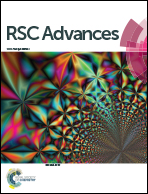Mechanisms of cellular uptake with hyaluronic acid—octadecylamine micelles as drug delivery nanocarriers
Abstract
Plenty of hyaluronic acid (HA) drug delivery systems have been developed to target cancer cells. Carboxyl of HA is the active group for targeting CD44 receptor, which is overexpressed in several different types of cancer cells. To verify whether the number of carboxyl is the main factor in cellular uptake, hyaluronic acid–octadecylamine (HM) conjugates with 12–51% degrees of substitution (DS) were synthesized. Moreover, a series of doxorubicin (DOX)-loaded HM micelles (DOX/HM) were prepared and characterized. With the increase of DS, the sizes of DOX/HM decreased obviously. The micelles had good fetal bovine serum stability and presented a controlled-release manner. In vitro cytotoxicity tests showed that all the blank micelles were nontoxic against Michigan Cancer Foundation-7 (MCF-7) cells (overexpressed CD44 receptors), whereas DOX/HM micelles with DS of 23% (DOX/HM23) exhibited optimal enhanced anticancer activity. Cellular uptake experiments showed that compared with the other micelles, DOX/HM23 had the appropriate DS and particle size, which led to remarkably efficient internalization to achieve the highest intracellular drug concentration. These results indicate that both the carboxyl groups and particle size play important roles in the cellular uptake of HA-based micelles.


 Please wait while we load your content...
Please wait while we load your content...